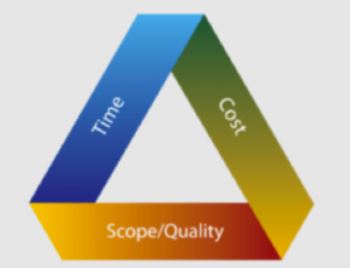 In my previous article, I provided an overview of my current personal project of preparing for and running for election as one the city councilors in Welland, Ontario.
In my previous article, I provided an overview of my current personal project of preparing for and running for election as one the city councilors in Welland, Ontario.
With a good understanding of the constraints for this work, this week’s article will focus on three key knowledge areas, namely scope, schedule and cost and how those will be managed over the life of the project.
There are three key deliverables for this project: candidate registration, the campaign itself and the post-campaign financial report.
The first and last deliverables are well defined as the requirements for those are specified by the city’s election officer and by the provincial guide for municipal elections. The first required me to get 25 endorsements from local residents, pay a nomination fee and complete some paperwork. The last will require me to complete a formal financial summary of campaign contributions and expenses and to submit it to the city by a specified deadline. As such, a predictive approach can be used for the management of both of these deliverables.
Not having run for public office before, it would be unwise for me to attempt to define the full scope of the campaign deliverable up front. Based on the time and budget remaining, certain work packages may be added, dropped or reprioritized. Therefore, an adaptive approach will make the most sense for completing this deliverable.
Outside of any restrictions imposed by the city or province, I have significant latitude on how to proceed. I have three objectives:
- To increase resident awareness of the upcoming election and the importance in their voting
- To create or increase awareness of myself as a candidate
- To convince a majority of eligible voters within my ward to vote for me
Given the limited budget I have set for the project, the specific levers I use will be based on maximizing the “bang for the buck”. I’ve reviewed the financial statements from the candidates in the most recent election as well as solicited ideas from my volunteer team.
I have elected to go with:
- A campaign website
- Lawn signs
- Door hangers (i.e. one page cardboard brochures which can be hung off front door handles)
- A one time advertisement in our local newspaper
- Door-to-door introductions
These tactics will leave me with just under 25% of my budget. This will be kept in reserve to be used for any cheap, quick wins which are identified closer to the election date.
Each of the deliverables has a set time window.
Candidate nominations can be submitted anytime between May 2 to August 19. Campaigning can commence anytime from the time when nomination papers have been filed and formally accepted to the election date which is October 24. Signs can be placed on lawns from September 9 and must be removed three days after the election date. And financial statements for the campaign are required to be submitted no later than March 31, 2023.
Having these key dates defined up front simplifies the planning process. For example, the constraint on how early signs can be placed will also set the date for when I’d need to have door hangers and lawn signs available to be given out.
Cost management is quite simple as I will only be paying for the procured campaign products or services. My time and that of my volunteer team is not being estimated, tracked or expensed.
In next week’s (final) article of this series, I will cover the key project risks as well as the responses implemented to address them.
(If you liked this article, why not pick up my book Easy in Theory, Difficult in Practice which contains 100 other lessons on project leadership? It’s available on Amazon.com and on Amazon.ca as well as a number of other online book stores)

 Last year I wrote
Last year I wrote  I frequently see questions asked in project management discussion groups about hybrid projects. As I wrote in last week’s article, projects themselves can’t be waterfall, agile, traditional or hybrid but how we approach them can be.
I frequently see questions asked in project management discussion groups about hybrid projects. As I wrote in last week’s article, projects themselves can’t be waterfall, agile, traditional or hybrid but how we approach them can be.


